By Martin Williams, Hong Kong
Inspired partly by reading Wallace's book The Malay Archipelago a few years ago, and by the chance to see great birds including Wallace's Standardwing, last month I headed to northeast Sulawesi and the Malukus [Moluccas] with my wife and 10-year old son. These notes are based on the trip; and rather than being an account of a "heavyweight" field expedition, they are aimed at giving an idea of what can be seen and done on a holiday - albeit a more adventurous holiday than a normal resort stay.
We first thought of Sulawesi, only then asking “What if also to Halmahera?”, as Halmahera has become well known for birding.
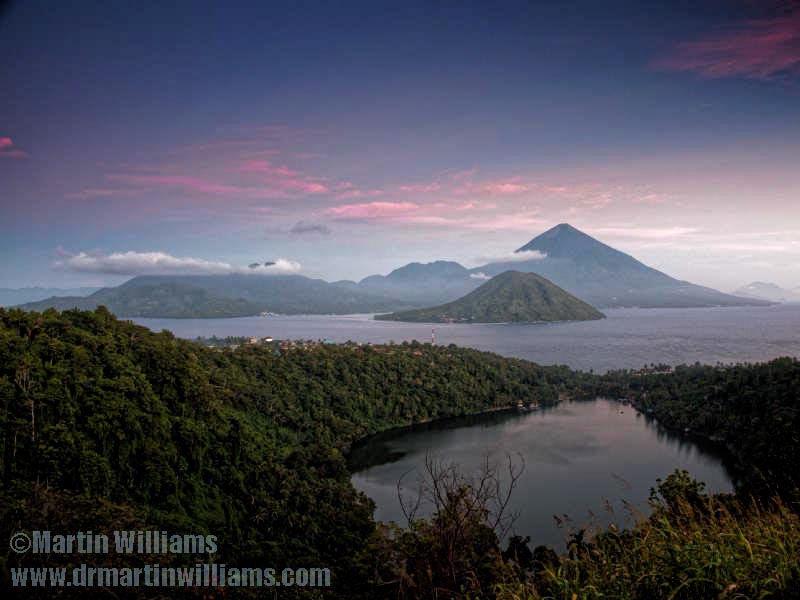
Sunset from lake Luguna, Ternate, Indonesia
Northeast Sulawesi
For Sulawesi, there were a few options; but the very northeast seemed best for this trip, given we had little more than two weeks for this plus the Malukus. It proved excellent. Visiting is relatively straightforward: there are very good transport links, with Manado the main city here. Plus a small but thriving ecotourism industry, perhaps initially driven by divers wanting something else to do after heading to resorts. Now helped by Facebook; there are several guides including some who know birds very well, and know locations etc: our guide was Irawan Halir. Plus, there are cosy homestays - simple hotels - right by the Tangkoko National Park.
Tangkoko’s a wonderful place, with lowland rainforest right by the coast. There are some mighty trees. Wallace himself visited this area and famously studied and collected the very unusual Maleo Fowl which dug their nests (like turtles) in the black volcanic sand beach. Sadly they are now extremely rare here, their eggs having been dug up and eaten by local people.
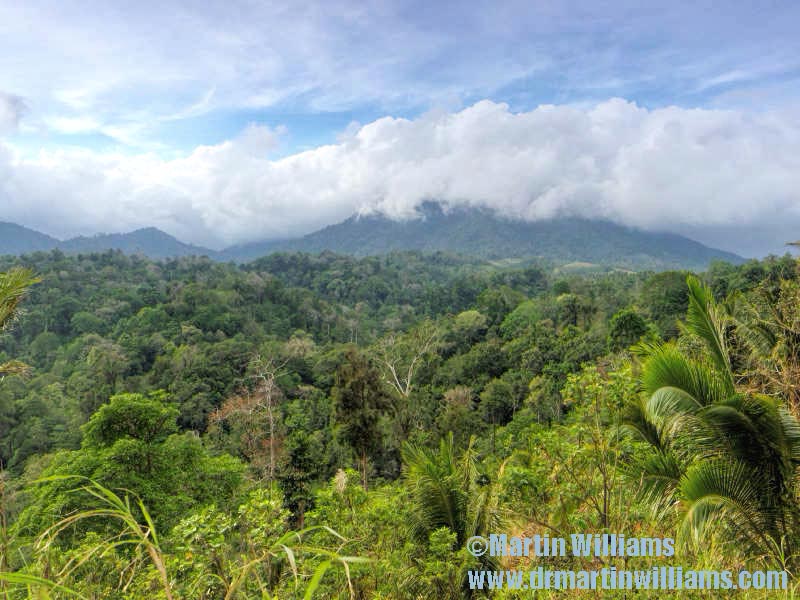
View over Tangkoko
Perhaps because of the ecotourism, there are some remarkably confiding birds such as jungle kingfishers - notably Green-backed, Lilac and Sumatran Dwarf kingfishers. The guides know daytime roost trees for Spectral Tarsiers, which seem to favour the tangled trunks and root systems of fig trees. Again evidently thanks to the tourism, we found it's possible to get astonishingly close to the tarsiers, holding cameras to within a metre or so. While there is disturbance, it seems they are thriving, and do emerge to feed at dusk even as tourists watch.
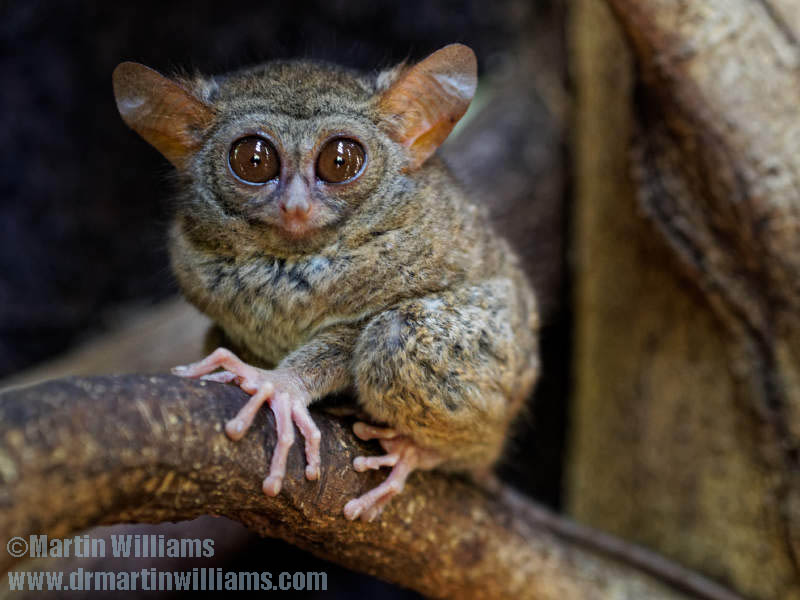
A tarsier
Also in Tangkoko, we saw the Sulawesi Crested Black Macaques that are readily found here, but now critically endangered due to habitat destruction and bushmeat trade. Again, these were confiding, even looking ready to snatch food from a few people camping by the beach.
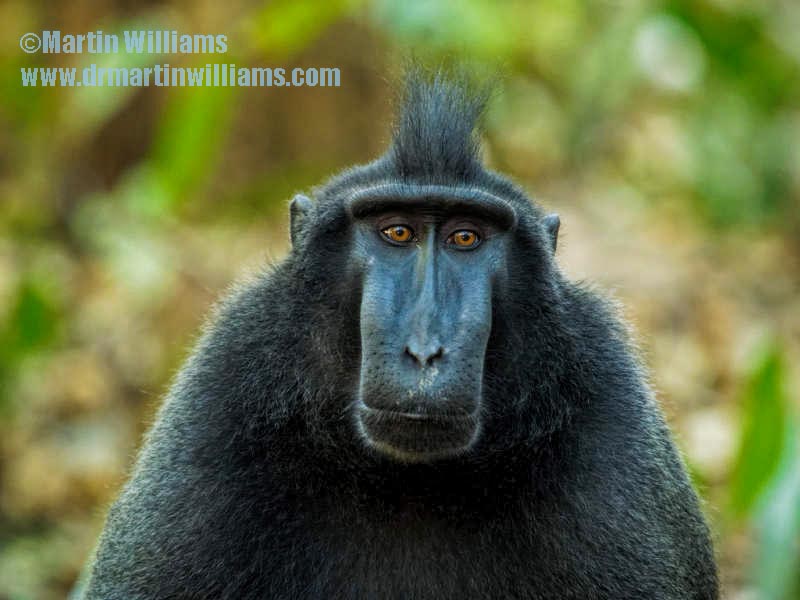
Black Macaque
Along the shore, coral was exposed at low tide, with colourful fish in rock pools. Snorkelling was excellent.
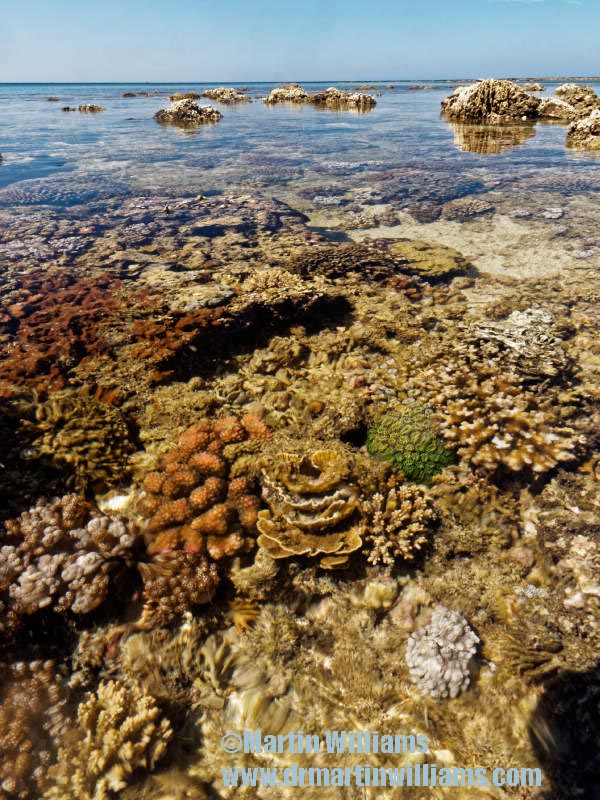
Coral at Tangkoko
We also headed into the hills south of Manado, to sites close to where Wallace passed. On the upper slopes of Gunung Mahawu we spent a little time in forest finding a few more endemic birds, notably Scaly-breasted Kingfisher. There was an easy path to the crater rim, from where there were views to the smoking crater of nearby Gunung Lokon, one of Indonesia's most active volcanoes.
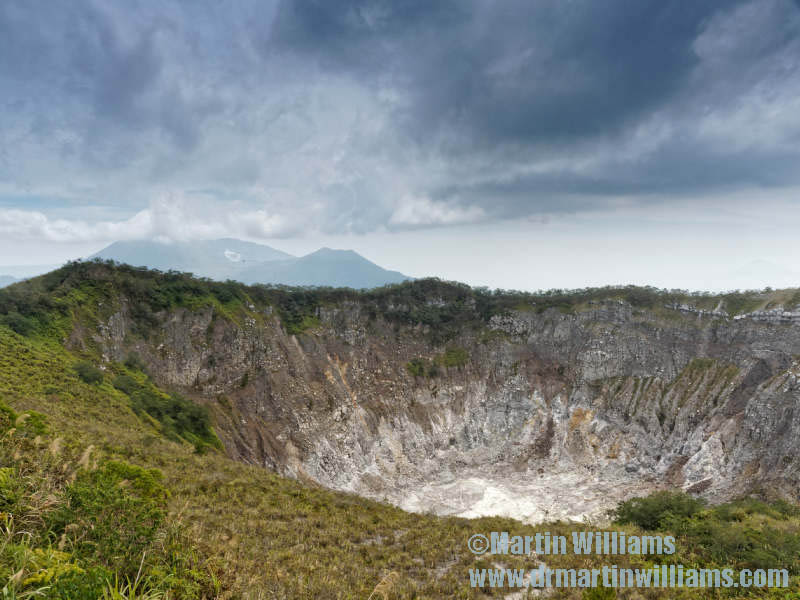
The crater of Gunung Mahawu
We started towards Tondano Lake, which Wallace stayed beside [and remarked on "general stagnation of bird and insect life"], but ran out of time - partly as Irawan took us to Linow, where there's another lake in a dormant volcano crater.
Linow was good; with hundreds of Cattle Egrets [and a few Little], also at least a hundred Wandering Whistling Ducks. We walked to an area of hot springs and bubbling mud pools, forming a mini primeval landscape: not getting too close given Wallace went to a mud volcano nearby and recounted a tale of how a Frenchmen fell through the crust and was engulfed in the horrible cauldron!
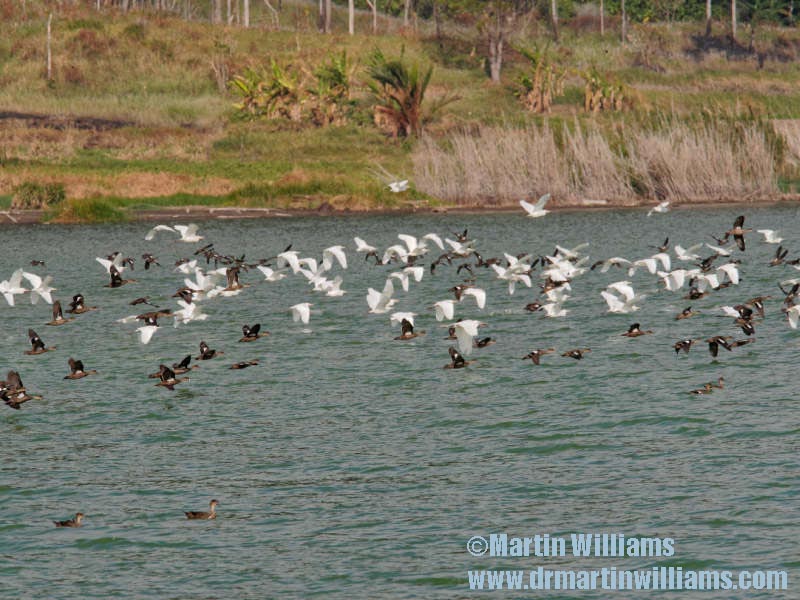
Cattle egrets
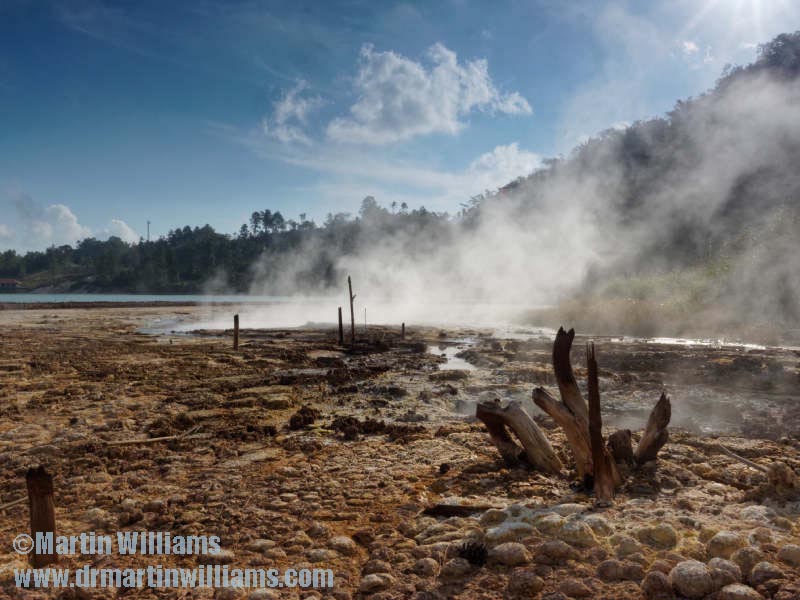
Linow hotsprings
North Malukus: Ternate, Bacan and Halmahera
There are ferries from Manado and nearby to Ternate in the Malukus. The distance isn't great, and it seemed a tempting option - for seabirds and just the ride, especially as Wallace travelled by sea. But we were told of rough seas, waves smacking high up a ferry a birding guide had just taken. Instead, we flew.
The flight to Ternate takes just over half an hour; but what a contrast to Sulawesi! The Malukus proved a real outpost; “the boondocks”. Not so very poor, but somehow as if rather disconnected from the rest of the world. Even in a gleaming new shopping mall, the internet was “not yet" connected. This seems odder given the main transport hub, Ternate, was a key Spice Island, so was a major place in global trade.
Even domestic tourism is barely developed here; let alone ecotourism. We found little English spoken; not such a hindrance to us given my wife is Indonesian, but if you do plan to visit and don't speak the language it's worth noting that you will probably want someone to help with the language.
Yet there are transport links, cars with drivers for hire, places to stay. And we found the people welcoming. So if you're a Wallace fan and fancy somewhere off the beaten track, perhaps an ideal place to head.
Ternate is a volcano island; Wallace noted it is earthquake afflicted, and there was a 5.6 quake while we were there, though evidently not felt at the place we were at the time.
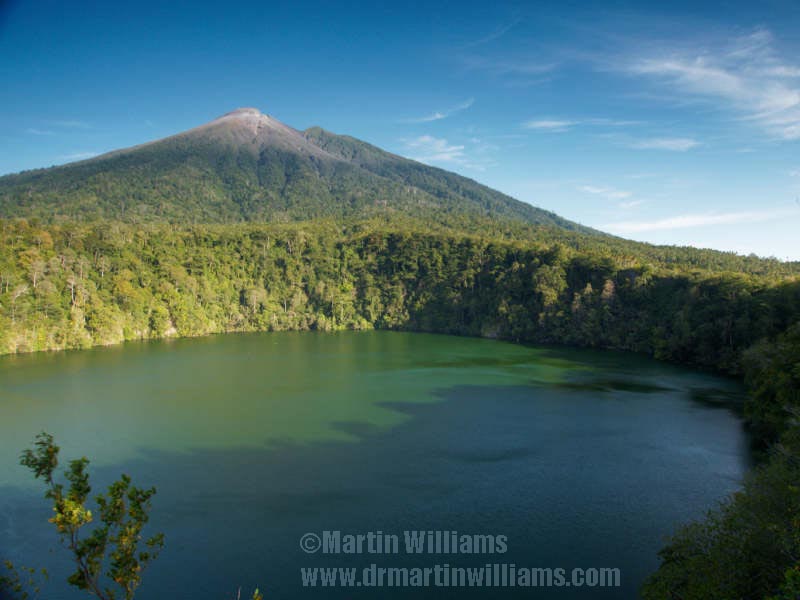
Lake Tidore on Ternate, with Mt Gamalama behind

Summit and crater of Gamalama volcano
There's little to see for wildlife. We missed parrots/pigeons and the crocodile at Tidore Lake, a crater lake near the coast, though 80 or more frigatebirds came to drink late on afternoon. A juvenile Variable Dwarf Kingfisher at a coastal site was a great surprise, and proved the only very confiding bird we saw in the Malukus.
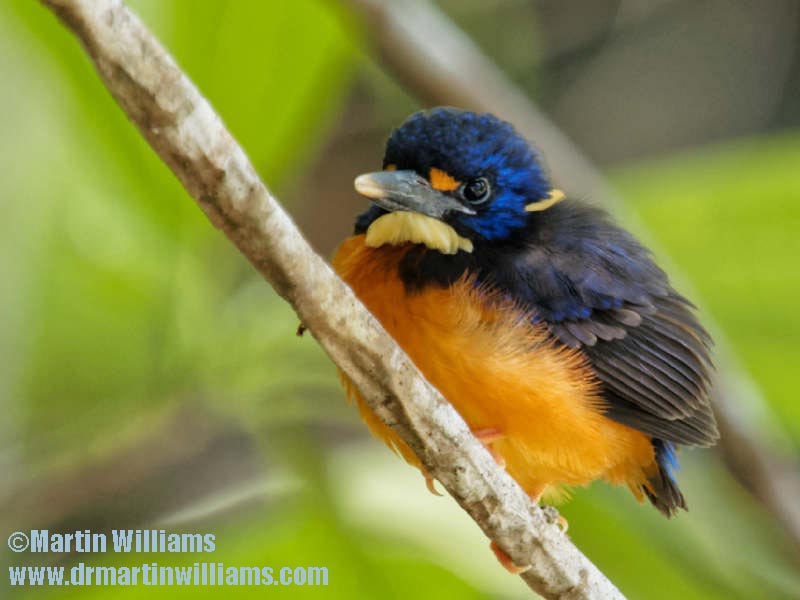
Juvenile Variable Dwarf Kingfisher
Ternate’s a good place to visit; including a house where Wallace just might have stayed for a short time; the main house he rented for three years has evidently been demolished.
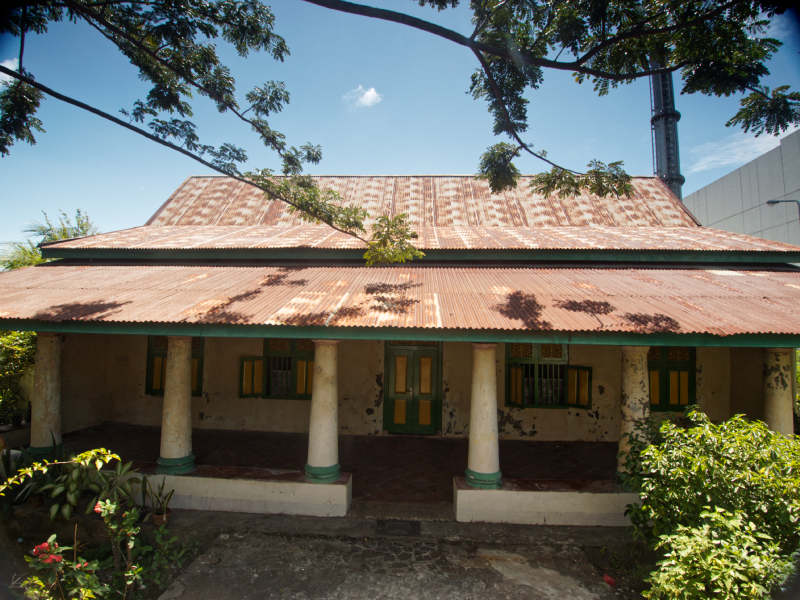
The house in which Wallace might have stayed [there is no evidence that he did stay here]
Here, too, we saw our first Willie Wagtails, which are really fantails . At first sight, I expected one was a bulbul - it behaved as bulbuls do, arriving in a bush by a shopping mall. Looked rather like the fantails I know from elsewhere in southeast Asia, but they are more skulking, not bold as brass. Seemed to me that with absence of typical bulbuls, these Willie Wagtails had taken much of their niche. Even the calls recalled bulbuls to my ears.
We had been offered chance to visit another island, Bacan – the place where Wallace found standardwing; and we could visit lek. It seemed worth a try, so we went [by ferry], and spent a couple of days there.
We did see standardwings at the lek, a little over an hour's walk up into forest. They were high in tall trees, not so easy to get good views: perhaps a little shy as the Indonesian army had visited not so long ago, and shot birds for target practice!
There was great forest; a smattering of other species including at least 40 Chattering Lories, Purple Dollarbird, Blyth’s Hornbills flying about [as if 8 or more in small area]. Surely far more can be found; cf a recent paper in Oriental Bird Club journal, Forktail, on finding Malukus endemics on nearby Obi.
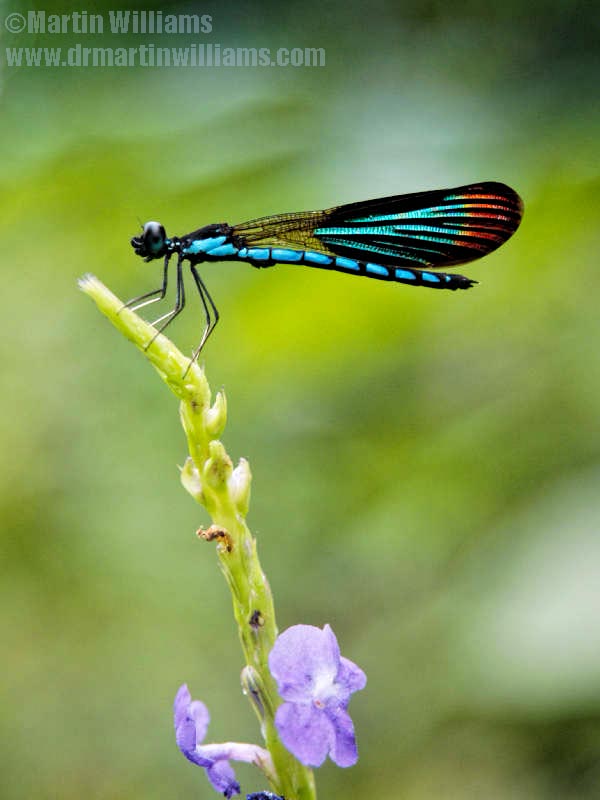
Bacan damselfly, possibly Rhinocypha monochroa
Also saw some Black Macaques; the population here is reportedly descended from a few individuals given to the sultan as a gift. The population was established by Wallace's time.
Bacan looks tiny on a map, but there are roads and so forth. Labuha is the main town for southern North Malukus. So you can stay in fair budget hotels, with choice of restaurants, including right by coast, the various shops etc [this is unlike key wildlife areas on Halmahera I believe].
It appeared jungle abounds; we only got to a tiny part of it. A simple restaurant at and on stilts above a shingly beach proved good at “siesta” time; you can snorkel and see abundant fish, a banded sea snake swam close below the area with tables. We heard of a place with many butterflies.
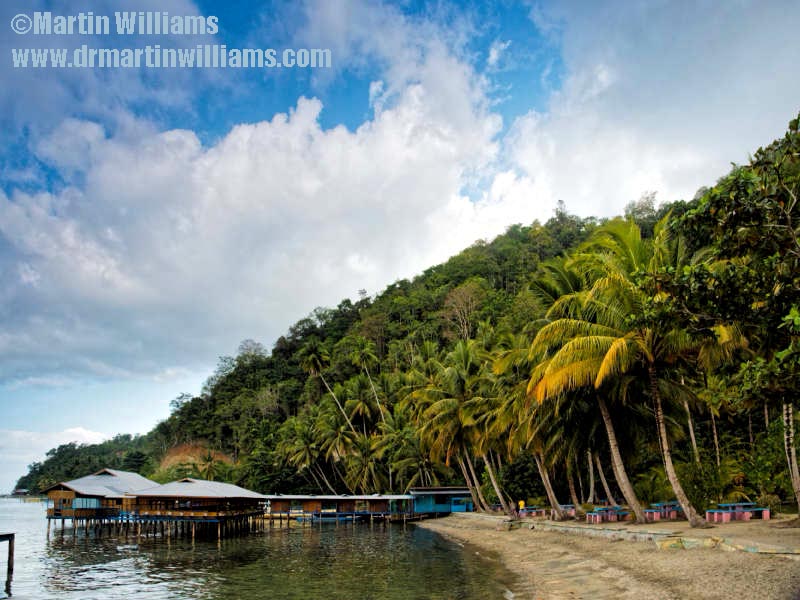
Sawadai where we stayed.
So although recent bird reports etc may be sparse, it's perhaps worth visiting.
Halmahera is considerably larger. But even though government offices lately moved there from Ternate it’s a wild place. There are highways [one suddenly deteriorates as you enter East Halmahera, with local government not so bothered about road maintenance!], villages are small, accommodation is basic for most part.
Wallace wrote of areas of rank grass, perhaps from earlier settlements that had been mostly deserted - he remarked on the sultan moving from Halmahera to Ternate [as the Dutch rearranged affairs in the Spice Islands].
We headed for Aketajawe-Lolobata National Park, roughly in the centre of the island. This has expanses of rainforest wilderness; jungle starting from elevations around the tops of coastal coconut plantations. An upriver trek one day was tough for birding, but into the kind of area I’d expect but in reality found hard to encounter in Borneo. Forest people live here, roaming in families, hunting with bows and arrows and simple snares. Our trek was to a standardwing lek, and though it was 11.30am by the time we arrived, there was still one bird calling and displaying here.
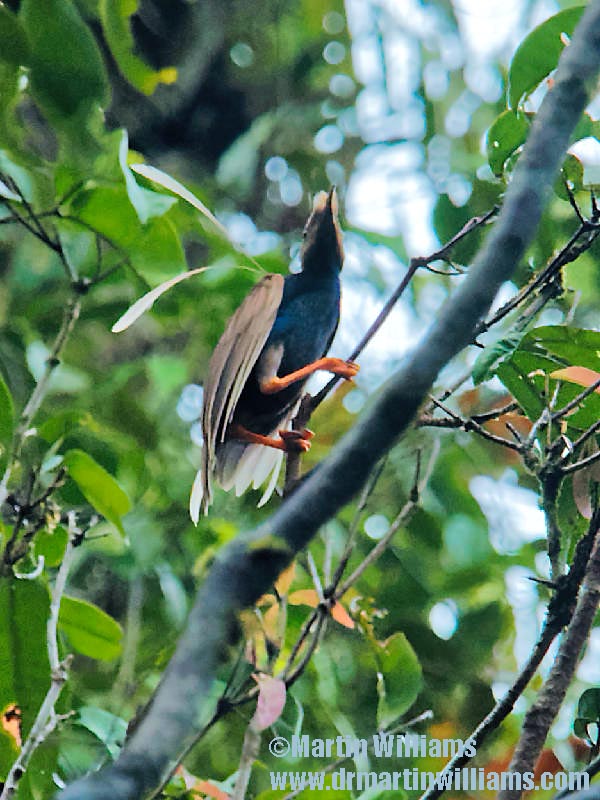
Male Wallace's Standardwing
Binagara’s a village just northeast of park. I had read of Pak Roji’s place here; and we stayed there. His place was away from the main village, set within the national park [the house was here first].
Pak Roji turned out to be a great guy; he speaks decent English, knows birds and other wildlife, a jungle everyman who enjoys exploring including caves. His home is simple place to stay; mattress on wooden floor, roofed but has tops of walls open to the outside [luckily, we were not hassled by mosquitoes; no malaria currently known here, but there was a case at the place we did a river trek, so prophylaxis is wise]; he has a generator for electricity, a stream at the back for running water/washing.
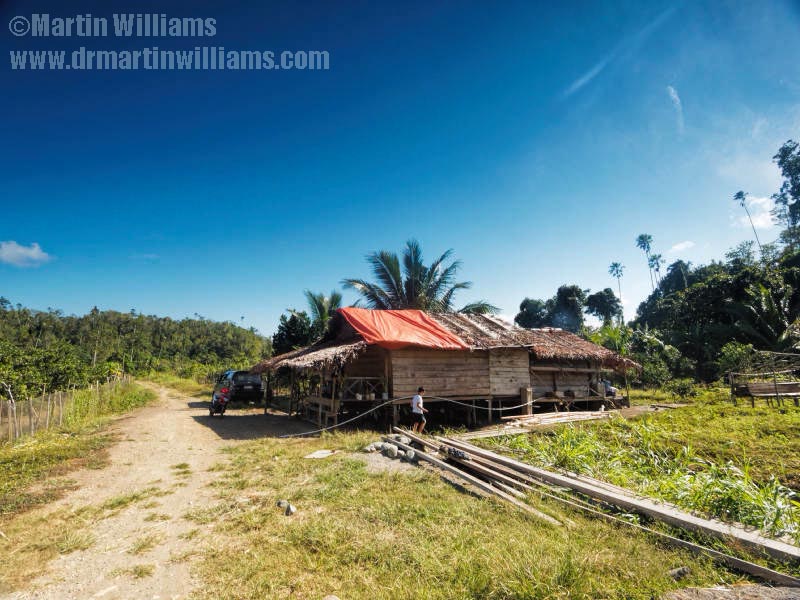
Pak Roji's house
There are some fields, also trees, around Pak Roji's. Plenty to be seen even from the verandah; breakfast with views of hornbills, Rainbow Bee-eaters, Rufous-breased Trillers, Scrub Cuckoo… Gurney’s Eagle flew over low, I heard but didn’t see one of Moluccan Goshawks that eat some of Pak Roji’s chickens.
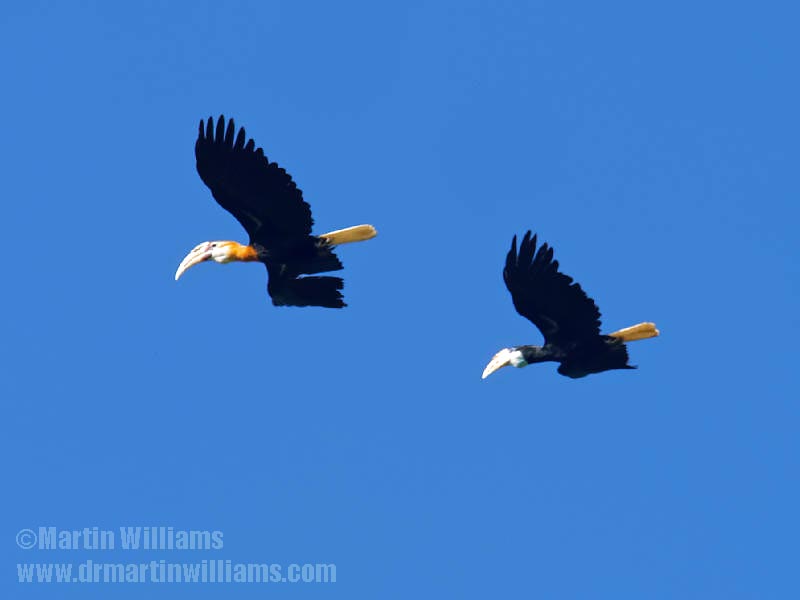
Blyth's Hornbills
Just behind the house he has set up a simple blind of palm fronds for photographing Ivory-breasted Pitta [worked for me!]. Also, the stream is the world's best place for Invisible Rail sightings, and while Pak Roji had seen three together just a very few weeks ago, this species lived up to its name for me.
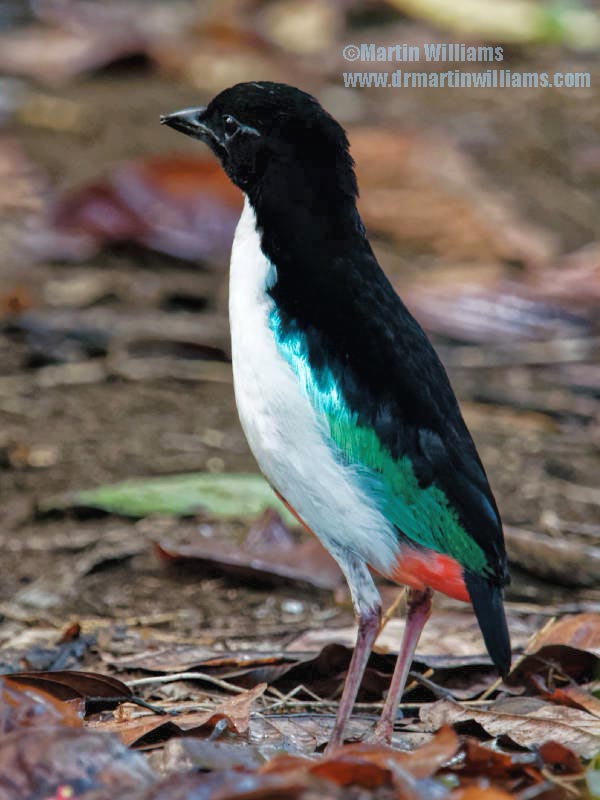
Ivory-breasted Pitta
We left before dawn one morning to walk to the standardwing lek. About 2 hours walk; some sleeping birds en route, including Common Paradise Kingfisher. The, sounds of forest waking up, such as songs of Ivory-breasted Pittas. The lek was good, maybe eight or more males mostly scattered around, though two in a tree with superb views not far above us. A viewing platform Pak Roji had built up a tree was only reached by wobbly ladder - too daunting for me.
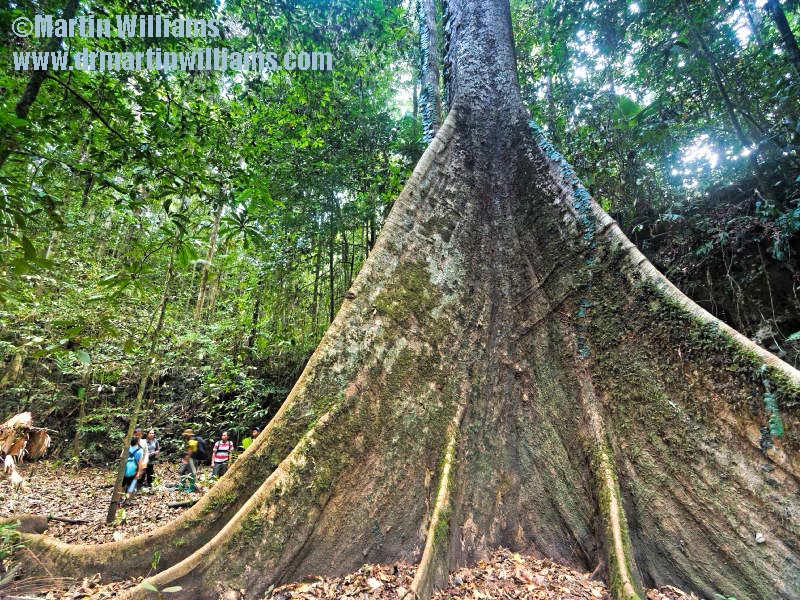
Huge rainforest tree
Also went on short drive to nearby mangroves, which is good for some other birds like lorikeets, treeswifts, Beach Kingfisher.
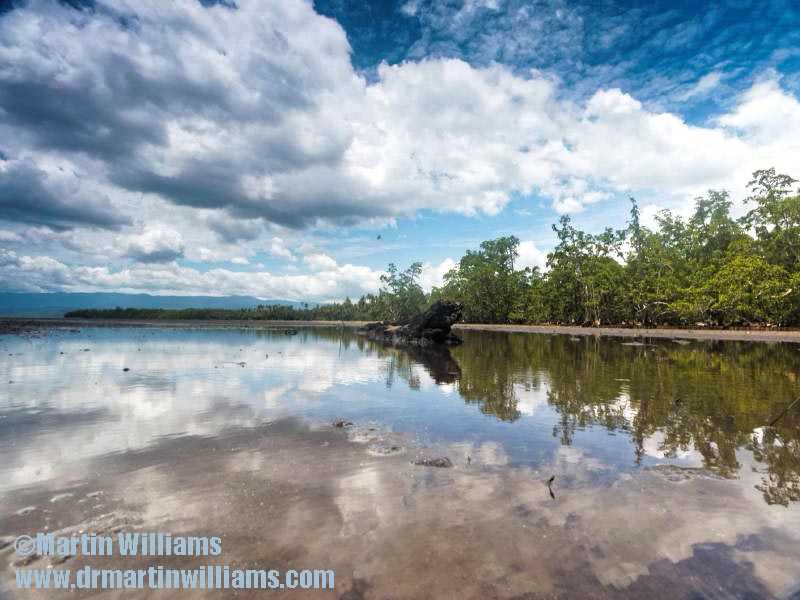
Mangroves
Pak Roji’s is about 2 hours by road from Sofifi, the place for ferries/speedboats you can hire to and from Ternate. It seems a well worthwhile destination; quick glance at the guestbook indicated various happy visitors, and several especially happy as they'd seen Invisible Rail [ah well, maybe we'll have to try to return someday].
Unlike some more on-the-beaten track locales, you can fairly readily make a difference here - we gave a small head torch and rather battered photo field guide to Pak Roji, who was well pleased. A guide on Bacan was using his mobile phone camera with zoom to try and observe birds, so a basic pair of binoculars would be hugely appreciated [we left him a small head torch].
Overall, it was fascinating and wonderfully rewarding to be in Wallacea, even on this relatively short trip. We'd love to return, including to explore places where few or no naturalists have recently gone...
[A more detailed article about Martin's trip can be read HERE. I highly recommend reading it.]
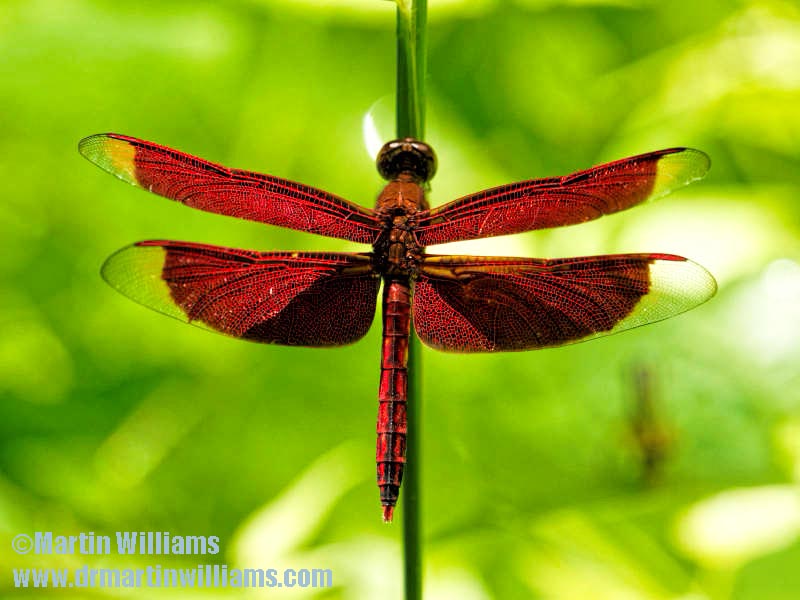
Halmahera dragonfly
